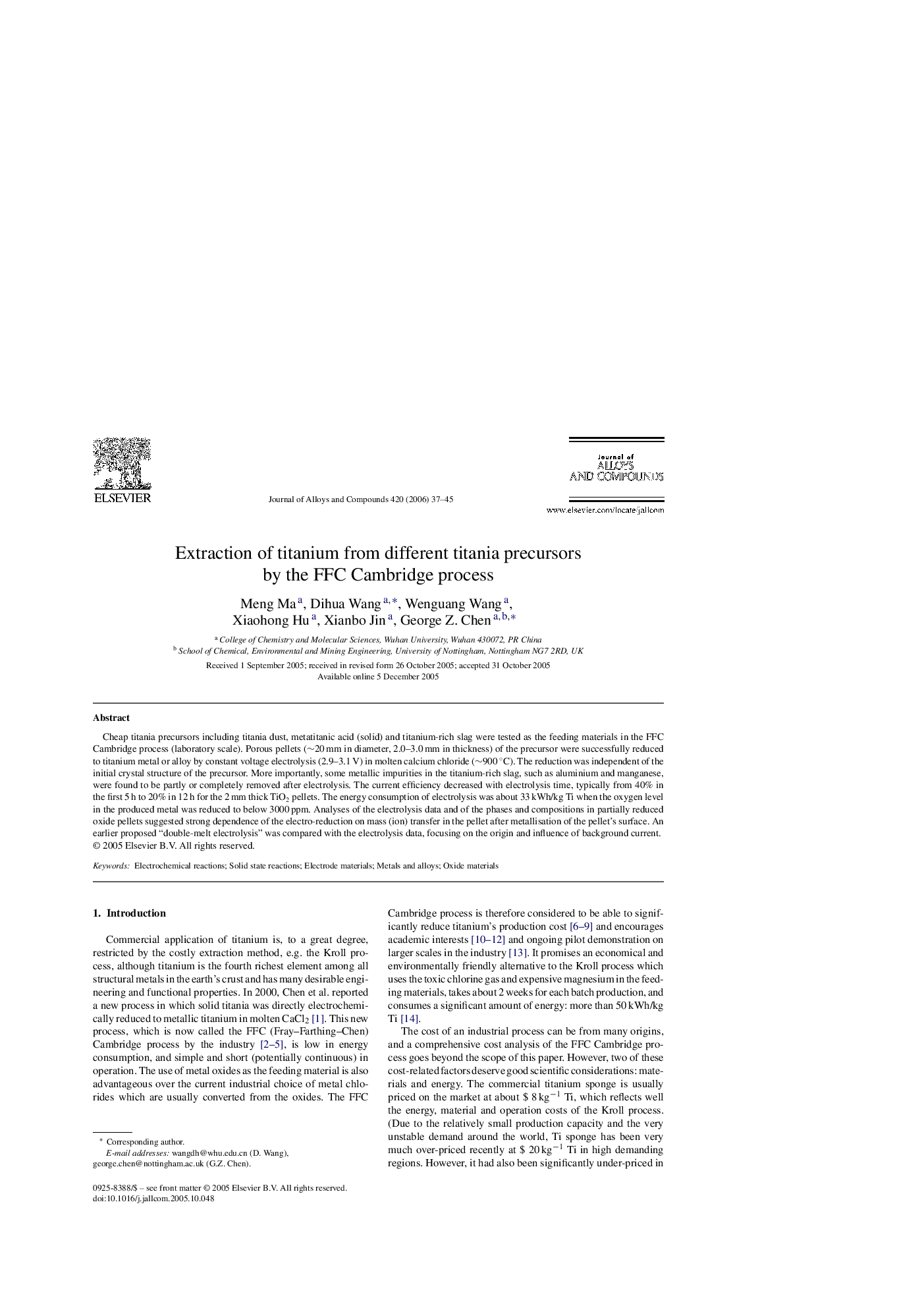| Article ID | Journal | Published Year | Pages | File Type |
|---|---|---|---|---|
| 1627216 | Journal of Alloys and Compounds | 2006 | 9 Pages |
Cheap titania precursors including titania dust, metatitanic acid (solid) and titanium-rich slag were tested as the feeding materials in the FFC Cambridge process (laboratory scale). Porous pellets (∼20 mm in diameter, 2.0–3.0 mm in thickness) of the precursor were successfully reduced to titanium metal or alloy by constant voltage electrolysis (2.9–3.1 V) in molten calcium chloride (∼900 °C). The reduction was independent of the initial crystal structure of the precursor. More importantly, some metallic impurities in the titanium-rich slag, such as aluminium and manganese, were found to be partly or completely removed after electrolysis. The current efficiency decreased with electrolysis time, typically from 40% in the first 5 h to 20% in 12 h for the 2 mm thick TiO2 pellets. The energy consumption of electrolysis was about 33 kWh/kg Ti when the oxygen level in the produced metal was reduced to below 3000 ppm. Analyses of the electrolysis data and of the phases and compositions in partially reduced oxide pellets suggested strong dependence of the electro-reduction on mass (ion) transfer in the pellet after metallisation of the pellet's surface. An earlier proposed “double-melt electrolysis” was compared with the electrolysis data, focusing on the origin and influence of background current.
